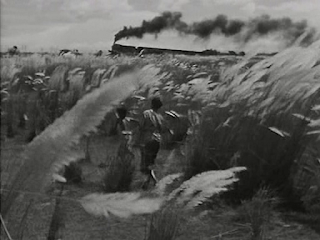Satyajit Ray Centenary: The golden life of Satyajit Ray
Satyajit Ray was a creative genius who needs no introduction. Apart from a filmmaker who placed Indian cinema on the global pedestal, with his maiden film ‘Pather Panchali’ (Song of the little road - 1955), he was an eminent scriptwriter, author, lyricist, magazine editor, illustrator, calligrapher, typographer and music composer. If he was alive, he would have turned 100 in May 2021. To commemorate the birth centenary of Ray, Chithravathi Centre for Creativity organised. Here we share the reports of some of those programmes, along with a profile of Satyajit Ray.
Born on May 2, 1921, in Kolkata (formerly Calcutta) as the son of Sukumar Ray and Suprabha Ray, he completed his schooling from Ballygunge Government High School and then BA in Economics from Presidency College, Kolkata. Since he lost his father when he was only two and a half years old, it was his who mother brought him up at the house of his maternal uncle. So he wanted to do some job and help his mother after his graduation. However, his mother opposed this and persuaded him to join the Visva-Bharti University at Santiniketan, which proved to be a turning point in his life. Here studied there for one year, and learned more about the oriental art, including Indian sculpture and miniature painting, apart from Japanese woodcuts, Chinese landscapes and so on.
After that, he joined as a junior visualizer at D.J. Keymer, a British-run advertising agency, and also associated with a publisher, Signet Press, creating book jacket designs. Since Ray’s father had studied printing technology in England and joined the family business of printing and publishing started by his father Upendrakishore Ray (Roychowdhury), this made him familiar with printing technology, which in turn helped him in his designs. He happened to read ‘Pather Panchali’ while doing the cover and illustrations for this book.
Then, in 1947, he along with a few friends co-founded Calcutta’s first film society, and he also started writing film reviews. Incidentally, Ray also started writing screenplays just out of personal interest, but did not think of making a film then. Then, in 1949, he happened to meet French film director, screenwriter, actor, producer and author Jean Renoir, when he was in Calcutta to scout locations for his film, ‘The River’. He accompanied Renoir in that trip, which brought him closer to cinema. Once day, when Renoir asked him if he was thinking filmmaking, Ray replied in affirmative and gave Renoir a brief outline of ‘Pather Panchali’, which he had recently illustrated.
Meanwhile, he visited London in 1950, as part of the official works and there he came closer to the world of films. Also, during the voyage, he made some notes on making a film based on ‘Pather Panchali’, though he had no experience in movie-making. Thus, on October 27, 1952, he began the shooting, with the help of some of his friends.
The first scene they shot was the ‘discovery of train by Apu and his sister Durga in the field of Kaash flowers’, which became one of the most famous scenes in the film. “One day’s work with camera and actors taught me more than all the dozen books,” he wrote later. However, they had to shoot only during Sundays, because of their work and even that was stopped after a few weeks. Then, after a long gap the shooting resumed in 1954. Thus in 1955, ‘Pather Panchali’ was released, which established his reputation as a world-class filmmaker, and it won many awards including President’s Gold & Silver Medals, Best Human Document, Cannes (1956) and Best Film, Vancouver (1958). Later, he took two more films, ‘Aparajito’ (The Unvanquished, 1956) and ‘Apur Sansar’ (The World of Apu, 1959), thus completing the trilogy, known as The Apu Trilogy, which tells the tale of a boy’s life from birth through manhood.
A total filmmaker, Ray had control over many aspects of filmmaking including screenplays. Many of the films were based on his own stories and he also designed the sets and costumes and also did music composing.
Also, he was an accomplished graphic designer and illustrator, and designed a few typefaces, ‘Ray Roman’ and ‘Ray Bizarre’. His interest for typography and illustration was visible in the credits and the publicity posters of his films as well. Even after becoming a filmmaker, his interest in literature was strong. In 1961, he revived the Bengali children’s magazine ‘Sandesh’, which his grandfather founded.
Apart from the international and national awards for his films, including Dadasaheb Phalke Award (1985), Ray also won many other laurels, including Padmashree (1958), Padmabhushan (1965) and Padmavibhushan (1976) from the Government of India, which also honoured him with Bharatratna (1992), the highest civilian award. He was also honoured with Oscar for Lifetime Achievement in 1992, thus becoming the first Indian to receive this honour. The award was presented to him via a video link, as he was seriously ill and undergoing treatment in hospital. Within weeks of receiving this award, Ray died on April 23, 1992, nine days before his 71st birthday.
Major films by Satyajit Ray
Pather Panchali (1955), Aparajito (1956), Parash Pathar (1958), Jalsaghar (1958), Apur Sansar (1959) Devi (1960), Teen Kanya (1961), Charulata (1964), Nayak (1966), Chiriyakhana (1967), Goopy Gyne Bagha Byne (1968), Aranyer Din Ratri (1969), Pratidwandi (1970), Seemabaddha (1971), Ashani Sanket (1973), Sonar Kella (1974), Jana Aranya (1975), Shatranj Ke Khilari (1977), Hirak Rajar Deshe (1980), Sadgati (1981), Ghare Baire (1984), Ganashatru (1990), Shakha Prashakha (1991), Agantuk (1991)










The film were interesting to see.
ReplyDeletenot film its films it a grammar mistake boi!
Deleteumm
ReplyDelete